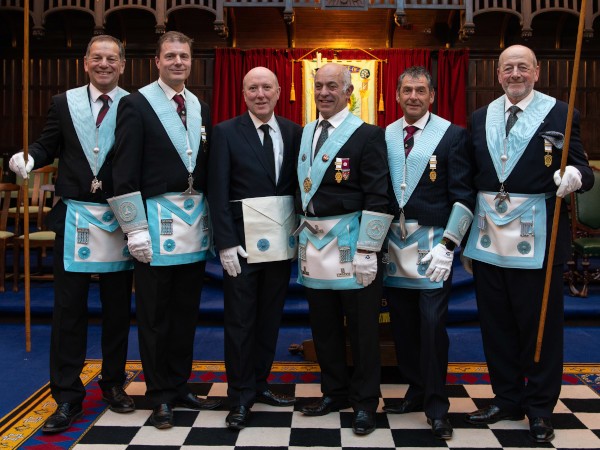Learn the Pathways and Ways to Join Freemason Across the World
Learn the Pathways and Ways to Join Freemason Across the World
Blog Article
Exploring the Mysteries of the Freemason: What You Need to Know
The Freemason, a term commonly shrouded in intrigue and debate, stands for a complicated tapestry of historic reality and contemporary myth. Developed in the late 18th century, this secret society was originally rooted in the Knowledge's suitables yet has actually considering that ended up being associated with conspiracy theory theories regarding elite control. As we browse the beginnings, essential figures, and the raw contrast in between myth and reality, one have to consider exactly how these stories affect contemporary assumptions of power and secrecy. What may be disclosed through a closer assessment of these aspects can test long-held assumptions regarding the darkness that stick around in our society.
Origins of the Freemason
The beginnings of the Freemason are soaked in a mix of historical intrigue and ideological fervor. Developed in 1776 in Ingolstadt, Bavaria, by Adam Weishaupt, the group was initially created as a secret culture focused on advertising Enlightenment perfects such as factor, secularism, and the separation of church and state. Weishaupt, a professor of canon legislation, sought to test the prevailing authority of the church and state, which he deemed overbearing establishments suppressing intellectual and individual flexibility.
The Freemason looked for to hire prominent participants from different social markets, including politics, academia, and the arts, to cultivate a network devoted to these Knowledge principles. The culture operated under a shroud of privacy, using coded language and rituals to safeguard its participants from persecution, specifically given the repressive environment of the moment. The Freemason faced significant opposition from both governmental authorities and religious organizations, which saw the team as a risk to their power.
Secret Numbers and Participants
That were the essential figures that formed the Freemason's early impact and direction? The Bavarian Freemason, established in 1776 by Adam Weishaupt, emerged as a reaction to the overbearing social structures of the time. how to become a freemason. Weishaupt, a legislation teacher, visualized the company as a way to advertise Enlightenment perfects such as factor, secularism, and equality. His first employment initiatives consisted of influential pundits, such as Baron von Knigge, that played an important duty in broadening the group's membership and organizational structure.
An additional considerable number was Johann Gottlieb Fichte, a popular philosopher whose concepts on nationalism and education reverberated with the Freemason's goals. Although Fichte was not an official participant, his philosophical underpinnings affected the team's ideological background. Additionally, numbers like the author and theorist Johann Wolfgang von Goethe were related to the more comprehensive intellectual movements of the time, although their direct participation with the Freemason stays debated.
These key figures added to the Freemason's very early direction, pushing the limits of political and social thought, while their collective efforts intended to test well-known standards and promote a climate of dynamic change in Europe.
Misconceptions vs. Reality
Several misconceptions surround the Freemason, frequently blending reality with fiction in a method that covers its real nature. The idea that the Freemason proceeds to put in significant impact over globe occasions is a misconception - how to become a freemason.
Another common misconception is that the Freemason comprises a network of elite people controling global affairs. In truth, numerous conspiracy theory theories overemphasize the group's importance, associating unfounded motives to social fads and occasions. This has actually have a peek here led to an oversimplified view of complex concerns.

Modern Analyses
Contemporary analyses of the Freemason usually show broader social stress and anxieties and a fascination with privacy and power. This contemporary lens frequently associates the Freemason with conspiracy concepts that recommend a concealed elite orchestrates world events, adjusting governments and economies for their own gain. Such stories take advantage of an ingrained suspect of authority, specifically in times of situation or social upheaval.

Furthermore, some contemporary analyses mount the Freemason as an allegory Read Full Report for the intricacies of globalization and the interconnectedness of significant individuals and companies. This point of view motivates an essential evaluation of just how power characteristics operate in today's world, highlighting the balance between openness and privacy in governance and business techniques.
Cultural Impact and Heritage
Influenced by centuries of intrigue, the cultural impact and tradition of the Freemason extend far past its historic origins. This secret society, established in the late 18th century, has actually penetrated numerous elements of pop culture, from literature and movie to songs and art. The principle of the Freemason has actually developed right into an icon of conspiracy theory concepts, often representing a regarded surprise power manipulating international events.
In literary works, writers like Dan Brown have woven the Freemason into detailed plots, exciting readers with motifs of secrecy and power. Movies such as "National Prize" and "The Da Vinci Code" even more bolster the allure of the culture, blending truth with fiction to develop interesting narratives.
The Freemason's influence additionally expands into music, with artists referencing the company to stimulate motifs of rebellion and societal review. This representation has actually added to an attraction with the concept of clandestine groups regulating the levers of power, reflecting social stress and anxieties concerning authority and transparency.
Ultimately, the Freemason's tradition is a complex tapestry of myth and fact, forming assumptions of secrecy and control in contemporary discourse. Its long-lasting existence in society highlights humankind's perennial mission for understanding hidden facts.
Verdict
The exploration check my reference of the Freemason reveals a complicated interaction in between historic truths and modern myth-making. Founded in the Knowledge age, this culture intended to test oppressive frameworks, yet its heritage has been overshadowed by conspiracy concepts that suggest elite adjustment. Recognizing the differences between the initial suitables and contemporary analyses is vital for understanding the enduring fascination with the Freemason and its substantial impact on cultural stories surrounding power and privacy in society.
Report this page